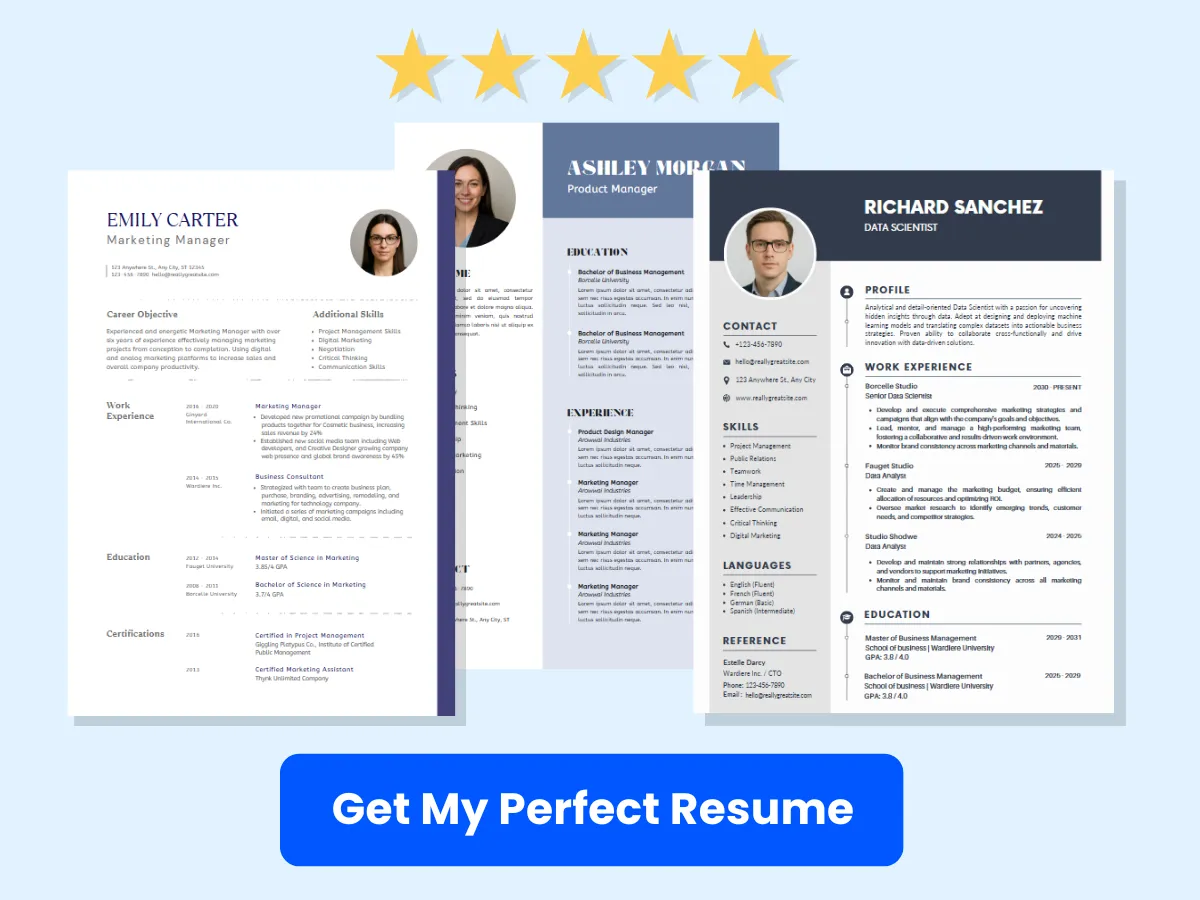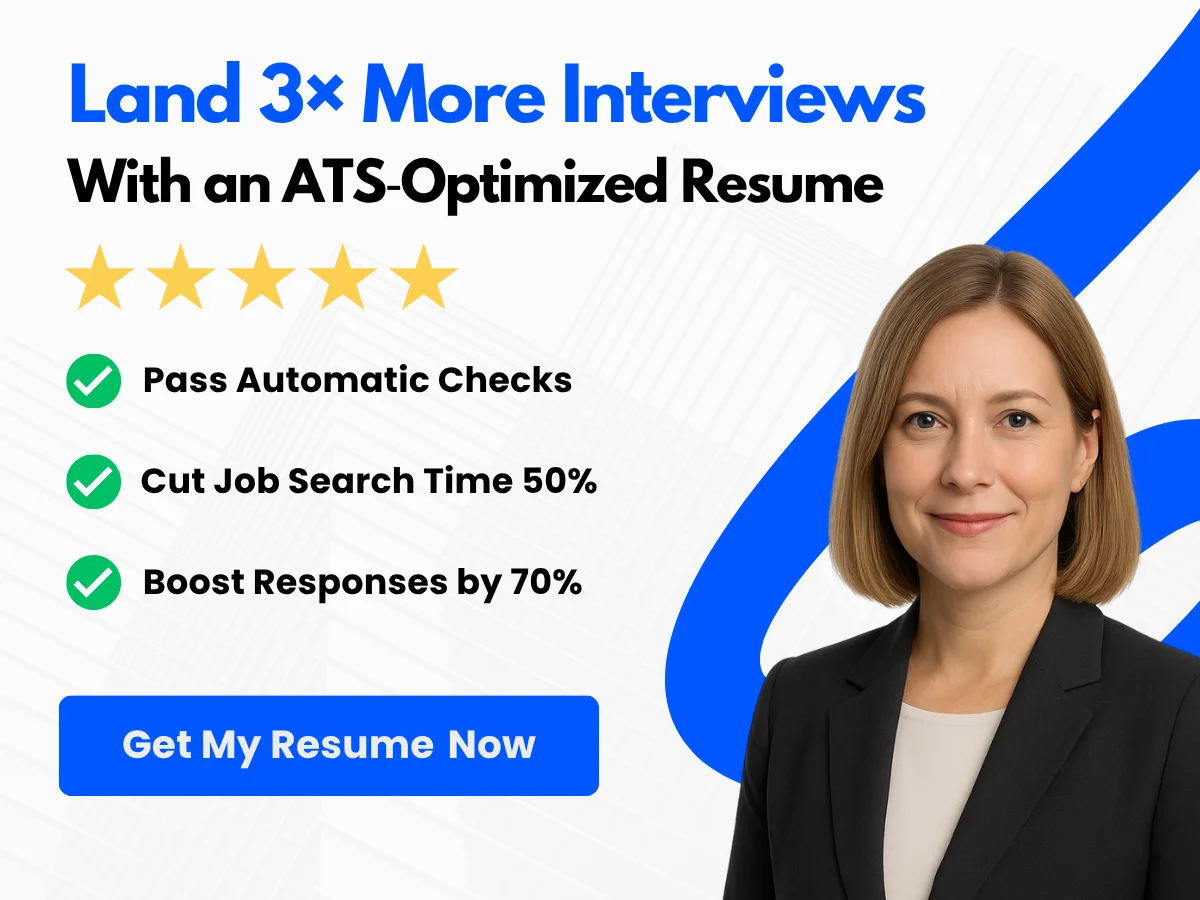The concept of workforce mobility has emerged as a critical factor for organizational success. But what exactly does workforce mobility entail? At its core, it refers to the ability of employees to work from various locations, whether that be from home, in the office, or on the go, facilitated by technology and flexible work arrangements. This paradigm shift not only enhances employee satisfaction but also drives productivity and innovation.
The importance of workforce mobility cannot be overstated. As companies strive to attract and retain top talent, offering flexible work options has become a key differentiator in a competitive job market. Moreover, organizations that embrace mobility are better equipped to respond to market changes, optimize their operations, and foster a culture of collaboration and inclusivity.
In this article, we will delve into the key concepts surrounding workforce mobility, exploring its various dimensions and the significant benefits it offers to both employees and employers. From understanding the technological tools that enable mobility to examining the impact on organizational culture, readers can expect a comprehensive overview that will equip them with the knowledge to navigate this essential aspect of modern business.
Exploring Workforce Mobility
Historical Context and Evolution
Workforce mobility has evolved significantly over the decades, shaped by technological advancements, globalization, and changing workforce expectations. In the early 20th century, the concept of mobility was largely limited to physical relocation for work, often driven by industrialization and the need for labor in specific regions. Workers moved to urban areas in search of jobs, leading to the growth of cities and the establishment of labor markets.
As economies transitioned from manufacturing to service-oriented industries in the late 20th century, the nature of workforce mobility began to change. The rise of technology and the internet facilitated remote work, allowing employees to perform their duties from virtually anywhere. This shift not only expanded the geographical boundaries of employment but also introduced new forms of mobility, such as telecommuting and flexible work arrangements.


Today, workforce mobility encompasses a broad spectrum of movements, including internal transfers within organizations, external job changes, and geographical relocations. The COVID-19 pandemic further accelerated these trends, as companies adopted remote work policies and employees sought greater flexibility in their careers. Understanding the historical context of workforce mobility helps organizations appreciate its current significance and the potential it holds for the future.
Types of Workforce Mobility
Workforce mobility can be categorized into several types, each with its unique characteristics and implications for both employees and organizations. The primary types include internal mobility, external mobility, geographical mobility, and functional mobility.
Internal Mobility
Internal mobility refers to the movement of employees within the same organization. This can take various forms, including promotions, lateral transfers, and job rotations. Internal mobility is crucial for talent retention and employee engagement, as it allows individuals to explore different roles and career paths without leaving the company.
For example, a marketing professional may transition to a sales role within the same organization, gaining new skills and experiences while remaining with the company. This not only benefits the employee by providing career development opportunities but also helps the organization retain valuable talent and reduce turnover costs.
Organizations that promote internal mobility often implement structured career development programs, mentorship initiatives, and transparent job posting systems. By fostering a culture of mobility, companies can enhance employee satisfaction and loyalty, ultimately leading to improved performance and productivity.
External Mobility
External mobility involves employees moving to different organizations, either within the same industry or across sectors. This type of mobility is often driven by factors such as career advancement, better compensation, or a desire for new challenges. External mobility can be beneficial for both employees and employers, as it brings fresh perspectives and ideas into the organization.


For instance, a software engineer may leave a tech startup to join a larger corporation, seeking more stability and growth opportunities. This transition not only allows the employee to advance their career but also enables the new employer to benefit from the engineer’s unique experiences and skills.
However, external mobility can also pose challenges for organizations, particularly in terms of knowledge transfer and team dynamics. Companies must develop strategies to integrate new hires effectively and ensure that they align with the organization’s culture and values.
Geographical Mobility
Geographical mobility refers to the physical relocation of employees to different locations, whether within the same country or internationally. This type of mobility is often associated with job assignments, relocations, or expatriate roles. Geographical mobility can be advantageous for both employees and organizations, as it allows for the sharing of knowledge and expertise across different markets.
For example, a multinational corporation may send an employee from its headquarters in New York to its branch in London to oversee a project. This not only provides the employee with valuable international experience but also helps the organization leverage local insights and foster global collaboration.
However, geographical mobility can also present challenges, such as cultural adjustments, family considerations, and logistical issues. Organizations must provide support for relocating employees, including relocation packages, cultural training, and assistance with housing and schooling for their families.


Functional Mobility
Functional mobility involves the movement of employees between different functions or departments within an organization. This type of mobility allows employees to diversify their skill sets and gain a broader understanding of the business. Functional mobility is particularly valuable in organizations that prioritize cross-functional collaboration and innovation.
For instance, an employee in the finance department may take on a temporary role in the marketing team to gain insights into customer behavior and market trends. This experience not only enhances the employee’s skill set but also fosters collaboration between departments, leading to more informed decision-making and improved business outcomes.
Organizations that encourage functional mobility often implement job rotation programs, cross-training initiatives, and collaborative projects. By promoting a culture of functional mobility, companies can create a more agile workforce that is better equipped to adapt to changing market conditions and business needs.
Benefits of Workforce Mobility
Workforce mobility offers numerous benefits for both employees and organizations. Understanding these advantages can help companies develop effective mobility strategies that align with their business goals and workforce needs.
Enhanced Employee Engagement and Satisfaction
One of the most significant benefits of workforce mobility is the positive impact it has on employee engagement and satisfaction. When employees have opportunities to explore different roles, functions, and locations, they are more likely to feel valued and invested in their careers. This sense of ownership can lead to increased motivation, productivity, and loyalty to the organization.
Talent Retention and Development
Workforce mobility is a powerful tool for talent retention and development. By providing employees with opportunities for internal mobility, organizations can reduce turnover rates and retain top talent. Employees are less likely to seek external opportunities when they see a clear path for growth and advancement within their current organization.
Moreover, organizations that prioritize mobility can develop a more skilled and versatile workforce. Employees who move between roles and functions gain diverse experiences and knowledge, making them more adaptable and capable of contributing to various aspects of the business.


Increased Innovation and Collaboration
Workforce mobility fosters innovation and collaboration by bringing together individuals with different perspectives and experiences. When employees move between teams, departments, or locations, they share ideas and best practices, leading to creative problem-solving and improved business outcomes.
For example, a project team composed of members from different functions may generate innovative solutions that a more homogenous team might overlook. This cross-pollination of ideas can drive organizational growth and enhance competitiveness in the marketplace.
Global Talent Acquisition
In an increasingly globalized economy, workforce mobility enables organizations to tap into a diverse talent pool. By embracing geographical mobility, companies can attract and retain talent from different regions and cultures, enriching their workforce and enhancing their ability to operate in diverse markets.
For instance, a company that actively recruits international talent can benefit from unique insights into local markets, customer preferences, and cultural nuances. This diversity can lead to more effective marketing strategies and improved customer relationships.
Agility and Resilience
Workforce mobility contributes to organizational agility and resilience. In a rapidly changing business environment, companies must be able to adapt quickly to new challenges and opportunities. A mobile workforce is better equipped to respond to shifts in market demand, technological advancements, and competitive pressures.
By fostering a culture of mobility, organizations can create a more flexible workforce that can pivot as needed, ensuring long-term sustainability and success.


Key Concepts in Workforce Mobility
Talent Management
Talent management is a strategic approach to attracting, developing, and retaining skilled employees. In the context of workforce mobility, it plays a crucial role in ensuring that organizations can effectively deploy their talent across various locations and roles. This involves not only identifying the right candidates for specific positions but also providing them with the necessary resources and support to thrive in different environments.
For instance, a multinational corporation may have employees who are required to relocate to different countries for project assignments. Effective talent management ensures that these employees are not only qualified for their roles but also culturally aware and adaptable to new environments. This can involve pre-departure training, mentorship programs, and ongoing support to help them adjust to their new surroundings.
Moreover, organizations that prioritize talent management are better positioned to leverage their workforce’s skills and capabilities. By fostering a culture of continuous learning and development, companies can enhance employee satisfaction and loyalty, which are essential for maintaining a mobile workforce.
Employee Engagement
Employee engagement refers to the emotional commitment that employees have towards their organization and its goals. In a mobile workforce, engagement becomes even more critical as employees may feel isolated or disconnected from their teams when working remotely or in different locations.
To foster engagement in a mobile workforce, organizations can implement various strategies, such as regular check-ins, virtual team-building activities, and recognition programs. For example, a company might use video conferencing tools to hold weekly team meetings, allowing remote employees to share their progress and challenges. This not only keeps everyone informed but also reinforces a sense of belonging and teamwork.
Additionally, organizations can leverage technology to create platforms for feedback and communication. Tools like employee engagement surveys can help gauge the sentiments of remote workers, allowing management to address any concerns proactively. By prioritizing employee engagement, companies can enhance productivity and reduce turnover, ultimately benefiting their workforce mobility initiatives.


Flexibility and Adaptability
Flexibility and adaptability are essential traits for both employees and organizations in a mobile workforce. As the nature of work continues to evolve, employees must be willing to embrace change and adapt to new circumstances, whether that involves shifting to remote work, adjusting to new technologies, or taking on different roles within the organization.
Organizations can foster a culture of flexibility by offering various work arrangements, such as flexible hours, remote work options, and job-sharing opportunities. For instance, a tech company might allow its software developers to choose their working hours, enabling them to balance personal commitments while meeting project deadlines. This flexibility not only enhances employee satisfaction but also encourages a more productive and engaged workforce.
Moreover, adaptability is crucial for organizations to respond to market changes and evolving business needs. Companies that encourage a growth mindset among their employees are better equipped to navigate challenges and seize new opportunities. Training programs that focus on developing problem-solving skills and resilience can help employees become more adaptable, ultimately supporting the organization’s workforce mobility goals.
Technology and Digital Transformation
Technology plays a pivotal role in enabling workforce mobility. The rise of digital tools and platforms has transformed how organizations manage their workforce, making it easier for employees to work from anywhere and collaborate with colleagues across the globe.
Cloud-based solutions, project management tools, and communication platforms have become essential for facilitating remote work. For example, tools like Slack and Microsoft Teams allow employees to communicate in real-time, share files, and collaborate on projects, regardless of their physical location. This seamless integration of technology not only enhances productivity but also fosters a sense of community among remote workers.
Furthermore, organizations must invest in digital transformation to stay competitive in today’s fast-paced business environment. This involves adopting new technologies that streamline processes, improve efficiency, and enhance the employee experience. For instance, implementing an integrated HR management system can help organizations manage talent mobility more effectively by providing insights into employee skills, performance, and career aspirations.


Remote Work and Telecommuting
Remote work and telecommuting have become increasingly popular in recent years, driven by advancements in technology and changing employee expectations. This shift has significant implications for workforce mobility, as it allows employees to work from virtually anywhere, breaking down geographical barriers.
Organizations that embrace remote work can tap into a broader talent pool, as they are no longer limited to hiring candidates within a specific geographic area. For example, a company based in New York can hire software engineers from anywhere in the world, allowing them to access diverse skills and perspectives. This not only enhances innovation but also helps organizations build a more inclusive workforce.
However, managing a remote workforce comes with its own set of challenges. Organizations must establish clear communication protocols, set expectations for performance, and provide the necessary tools and resources for remote employees to succeed. Regular training and support can help employees navigate the unique challenges of remote work, ensuring they remain engaged and productive.
Gig Economy and Freelancing
The gig economy has transformed the traditional employment landscape, with more individuals opting for freelance and contract work. This shift has significant implications for workforce mobility, as organizations increasingly rely on gig workers to meet their needs for flexibility and specialized skills.
Freelancers and gig workers offer organizations the ability to scale their workforce up or down quickly, depending on project demands. For instance, a marketing agency may hire freelance graphic designers for a specific campaign, allowing them to access specialized skills without the long-term commitment of hiring full-time employees. This flexibility is particularly valuable in industries that experience fluctuating workloads.
However, managing a gig workforce requires a different approach than traditional employee management. Organizations must establish clear contracts, set expectations for deliverables, and ensure effective communication with gig workers. Additionally, integrating gig workers into the company culture can be challenging, as they may not have the same level of engagement as full-time employees. Organizations can address this by including gig workers in team meetings and providing opportunities for collaboration.
Understanding the key concepts of workforce mobility is essential for organizations looking to thrive in today’s dynamic work environment. By focusing on talent management, employee engagement, flexibility, technology, remote work, and the gig economy, companies can create a mobile workforce that is agile, productive, and ready to meet the challenges of the future.
Benefits of Workforce Mobility
Workforce mobility refers to the ability of employees to work from various locations, whether that be from home, in a different city, or even in another country. This flexibility has become increasingly important in today’s fast-paced, technology-driven world. Organizations that embrace workforce mobility can reap numerous benefits that not only enhance their operational efficiency but also improve employee satisfaction and retention. Below, we explore the key benefits of workforce mobility in detail.
Enhanced Employee Satisfaction and Retention
One of the most significant advantages of workforce mobility is the enhancement of employee satisfaction. When employees have the flexibility to choose where and how they work, they often feel more empowered and valued. This autonomy can lead to higher job satisfaction, as employees can tailor their work environments to suit their personal preferences and lifestyles.
For instance, a software developer who can work from home may find it easier to balance family responsibilities, leading to a more positive work-life integration. Companies that offer remote work options often see lower turnover rates, as employees are less likely to seek new opportunities when they feel their needs are being met. According to a study by Gallup, organizations that prioritize employee engagement and satisfaction can experience up to 25% lower turnover rates.
Increased Productivity and Efficiency
Workforce mobility can significantly boost productivity and efficiency. When employees are allowed to work in environments where they feel most comfortable, they are often more focused and motivated. Remote work eliminates many of the distractions commonly found in traditional office settings, such as noise and interruptions from colleagues.
Moreover, flexible work arrangements can lead to better time management. Employees can structure their work hours around their peak productivity times, whether that’s early in the morning or late at night. For example, a marketing professional might find that they produce their best work in the quiet hours of the evening, free from the hustle and bustle of a typical office environment.
Additionally, technology plays a crucial role in facilitating workforce mobility. Tools such as project management software, video conferencing, and cloud-based applications enable teams to collaborate effectively, regardless of their physical location. This seamless connectivity can lead to faster decision-making and project completion, ultimately driving organizational success.
Access to a Broader Talent Pool
Workforce mobility allows organizations to tap into a global talent pool. By removing geographical constraints, companies can attract and hire the best talent from anywhere in the world. This is particularly beneficial for specialized roles where local talent may be scarce.
For example, a tech startup based in San Francisco can hire a skilled software engineer from Eastern Europe without requiring them to relocate. This not only enhances the diversity of the workforce but also brings in fresh perspectives and ideas that can drive innovation.
Furthermore, a diverse workforce can lead to improved problem-solving and creativity. Different cultural backgrounds and experiences contribute to a variety of viewpoints, which can enhance collaboration and lead to more innovative solutions. According to a McKinsey report, companies with diverse teams are 35% more likely to outperform their competitors in terms of financial returns.
Cost Savings and Financial Benefits
Implementing workforce mobility can lead to significant cost savings for organizations. One of the most immediate financial benefits is the reduction in overhead costs associated with maintaining a physical office space. Companies can save on rent, utilities, and office supplies by allowing employees to work remotely.
Additionally, workforce mobility can reduce employee-related costs. For instance, organizations can offer flexible work arrangements that eliminate the need for extensive travel expenses. Employees who can work from home or a local co-working space can save on commuting costs, which can be a significant financial burden in urban areas.
Moreover, companies can invest the savings from reduced overhead into other areas, such as employee development programs or technology upgrades, further enhancing their operational capabilities. A study by Global Workplace Analytics found that employers can save an average of $11,000 per year for each employee who works remotely half of the time.
Improved Innovation and Creativity
Workforce mobility fosters an environment conducive to innovation and creativity. When employees are given the freedom to work in diverse settings, they are often inspired to think outside the box. Exposure to different environments and cultures can spark new ideas and approaches to problem-solving.
For example, a design team that collaborates with freelancers from various countries may incorporate unique design elements influenced by different cultural aesthetics. This cross-pollination of ideas can lead to innovative products and services that resonate with a broader audience.
Furthermore, remote work can encourage employees to take ownership of their projects, leading to a greater sense of accountability and motivation. When individuals feel trusted to manage their work independently, they are more likely to experiment and take risks, which are essential components of the creative process.
Better Work-Life Balance for Employees
Workforce mobility significantly contributes to improved work-life balance for employees. The ability to work from home or choose flexible hours allows individuals to better manage their personal and professional responsibilities. This balance is crucial for mental health and overall well-being.
For instance, parents can attend to their children’s needs while still fulfilling their work obligations, reducing stress and increasing job satisfaction. Employees who can integrate their work and personal lives often report feeling less overwhelmed and more engaged in their roles.
Moreover, organizations that prioritize work-life balance are more likely to attract and retain top talent. In a competitive job market, candidates often seek employers that offer flexibility and support for their personal lives. According to a survey by FlexJobs, 73% of respondents cited work-life balance as the most important factor when considering a job offer.
The benefits of workforce mobility are multifaceted, impacting employee satisfaction, productivity, talent acquisition, cost savings, innovation, and work-life balance. As organizations continue to adapt to the changing landscape of work, embracing workforce mobility will be essential for fostering a thriving and engaged workforce.
Challenges and Solutions in Implementing Workforce Mobility
As organizations increasingly adopt workforce mobility strategies, they encounter a variety of challenges that can hinder the successful implementation of these initiatives. Understanding these challenges and developing effective solutions is crucial for businesses aiming to leverage the benefits of a mobile workforce. Below, we explore common challenges associated with workforce mobility and propose actionable solutions to address them.
Common Challenges
Resistance to Change
One of the most significant hurdles organizations face when implementing workforce mobility is resistance to change. Employees may be accustomed to traditional work environments and may feel apprehensive about adapting to new technologies or work practices. This resistance can stem from a fear of the unknown, concerns about job security, or a lack of understanding of the benefits of mobility.
Security and Data Privacy Concerns
With the rise of mobile workforces, security and data privacy have become paramount concerns. Employees accessing sensitive company information from various locations and devices can expose organizations to data breaches and cyber threats. Ensuring that data remains secure while allowing flexibility in work arrangements is a critical challenge.
Communication Barriers
Effective communication is essential for any organization, but it can be particularly challenging in a mobile workforce. Employees working remotely or in different locations may struggle to stay connected with their teams, leading to misunderstandings, decreased collaboration, and a sense of isolation.
Legal and Compliance Issues
Workforce mobility can also introduce legal and compliance challenges. Different jurisdictions may have varying labor laws, tax implications, and regulations regarding remote work. Organizations must navigate these complexities to ensure compliance and avoid potential legal repercussions.
Effective Solutions
Change Management Strategies
To overcome resistance to change, organizations should implement robust change management strategies. This involves clearly communicating the reasons for the transition to a mobile workforce and the benefits it brings. Engaging employees in the process through feedback sessions and pilot programs can help alleviate fears and foster a sense of ownership. Additionally, showcasing success stories from early adopters within the organization can motivate others to embrace the change.
Robust IT Infrastructure
Addressing security and data privacy concerns requires a strong IT infrastructure. Organizations should invest in secure cloud services, virtual private networks (VPNs), and endpoint security solutions to protect sensitive data. Implementing multi-factor authentication and regular security audits can further enhance data protection. Additionally, providing employees with secure devices and training them on best practices for data security can mitigate risks associated with mobile work.
Clear Communication Channels
To combat communication barriers, organizations should establish clear communication channels that facilitate collaboration among remote teams. Utilizing collaboration tools such as Slack, Microsoft Teams, or Zoom can help maintain open lines of communication. Regular check-ins, virtual team meetings, and social events can also foster a sense of community and keep employees engaged, regardless of their physical location.
Comprehensive Policies and Training
Legal and compliance issues can be addressed by developing comprehensive policies that outline the expectations and responsibilities of remote employees. Organizations should consult legal experts to ensure that their policies comply with local labor laws and regulations. Additionally, providing training on these policies can help employees understand their rights and obligations while working remotely. Regular updates to policies may be necessary to adapt to changing regulations and best practices.
Future Trends in Workforce Mobility
Emerging Technologies and Their Impact
As the landscape of work continues to evolve, emerging technologies are playing a pivotal role in shaping workforce mobility. The integration of advanced tools and platforms is not only enhancing the way employees interact with their work environments but also redefining the very concept of mobility itself.
One of the most significant technological advancements is the rise of cloud computing. Cloud-based solutions allow employees to access their work from anywhere, breaking down geographical barriers. For instance, platforms like Microsoft 365 and Google Workspace enable teams to collaborate in real-time, regardless of their physical location. This flexibility is crucial for organizations looking to attract and retain top talent, as it allows employees to work in a manner that suits their lifestyle and personal commitments.
Additionally, mobile applications are becoming increasingly sophisticated, providing employees with tools to manage their tasks, communicate with colleagues, and access company resources on the go. Applications such as Slack, Trello, and Asana facilitate seamless communication and project management, empowering employees to remain productive while working remotely or on the move.
Moreover, the Internet of Things (IoT) is also influencing workforce mobility. Smart devices and wearables can track employee productivity and health, providing valuable insights that can help organizations optimize their workforce. For example, companies can use data from wearable devices to understand how employees are managing their time and energy, leading to better work-life balance initiatives.
The Role of Artificial Intelligence and Automation
Artificial Intelligence (AI) and automation are set to revolutionize workforce mobility by streamlining processes and enhancing decision-making. AI-driven tools can analyze vast amounts of data to identify trends and patterns, enabling organizations to make informed decisions about workforce allocation and mobility strategies.
For instance, AI can help organizations predict which employees are likely to seek remote work opportunities based on their past behavior and preferences. This predictive capability allows companies to proactively address potential issues, such as talent retention and employee satisfaction, by offering tailored mobility options that align with individual needs.
Automation also plays a crucial role in workforce mobility by reducing the administrative burden on employees. Routine tasks such as scheduling, reporting, and data entry can be automated, freeing up employees to focus on more strategic initiatives. For example, chatbots can handle common HR inquiries, allowing employees to get quick answers without needing to navigate complex systems or wait for human assistance.
Furthermore, AI can enhance the onboarding process for remote employees. Virtual onboarding platforms can use AI to personalize the experience, ensuring that new hires receive the information and resources they need to succeed in their roles, regardless of their location. This not only improves the onboarding experience but also accelerates the time it takes for new employees to become productive members of the team.
Predictions for the Next Decade
Looking ahead, several key predictions can be made regarding workforce mobility over the next decade. First, the trend towards hybrid work models is expected to continue gaining traction. Organizations will increasingly adopt flexible work arrangements that allow employees to choose when and where they work, leading to a more engaged and satisfied workforce.
Second, the demand for remote work will likely increase, driven by employee preferences and the need for organizations to remain competitive in the talent market. Companies that embrace remote work as a permanent option will have a distinct advantage in attracting top talent from a global pool.
Third, the integration of advanced technologies will become more prevalent. As organizations invest in AI, machine learning, and automation, they will be able to create more efficient and effective workforce mobility strategies. This will include the use of data analytics to inform decision-making and optimize workforce allocation based on real-time insights.
Additionally, the focus on employee well-being will intensify. Organizations will recognize the importance of supporting their employees’ mental and physical health, particularly in a remote work environment. This may lead to the implementation of wellness programs, mental health resources, and initiatives aimed at fostering a sense of community among remote workers.
Preparing for Future Workforce Mobility Trends
To effectively prepare for the future of workforce mobility, organizations must adopt a proactive approach. Here are several strategies that can help businesses navigate the evolving landscape:
- Invest in Technology: Organizations should prioritize investments in technology that supports remote work and collaboration. This includes cloud-based tools, communication platforms, and project management software that facilitate seamless interaction among team members.
- Embrace Flexibility: Companies should develop policies that promote flexibility in work arrangements. This may involve offering hybrid work options, flexible hours, and the ability for employees to choose their work environment.
- Focus on Employee Development: Providing opportunities for professional growth and development is essential in a mobile workforce. Organizations should invest in training programs, mentorship initiatives, and resources that empower employees to enhance their skills and advance their careers.
- Enhance Communication: Clear and open communication is vital in a remote work environment. Organizations should establish regular check-ins, feedback mechanisms, and channels for employees to voice their concerns and suggestions.
- Prioritize Well-Being: Supporting employee well-being should be a top priority. Organizations can implement wellness programs, mental health resources, and initiatives that promote work-life balance to ensure employees feel valued and supported.
By taking these steps, organizations can position themselves to thrive in the future of workforce mobility, creating a dynamic and engaged workforce that is well-equipped to meet the challenges of an ever-changing work environment.
How to Develop a Workforce Mobility Strategy
Assessing Organizational Needs and Goals
Before embarking on the journey to develop a workforce mobility strategy, it is crucial for organizations to assess their specific needs and goals. This assessment serves as the foundation for a successful mobility program and ensures that the strategy aligns with the overall business objectives.
Start by conducting a thorough analysis of the current workforce demographics, skills, and capabilities. This can be achieved through employee surveys, interviews, and performance reviews. Understanding the existing talent pool will help identify gaps in skills and competencies that mobility initiatives can address.
Next, consider the organization’s long-term goals. Are you looking to expand into new markets, enhance employee engagement, or improve retention rates? Each of these objectives may require different mobility strategies. For instance, if the goal is to enter new geographical markets, a focus on international assignments may be necessary. Conversely, if the aim is to enhance employee engagement, internal mobility programs that allow employees to explore different roles within the organization may be more appropriate.
Additionally, it is essential to evaluate the organizational culture and readiness for mobility. A culture that values flexibility, adaptability, and continuous learning will be more conducive to successful workforce mobility initiatives. Engaging with leadership and key stakeholders during this assessment phase can provide valuable insights and foster buy-in for the upcoming strategy.
Creating a Mobility Framework
Once the organizational needs and goals have been assessed, the next step is to create a comprehensive mobility framework. This framework should outline the key components of the mobility strategy, including policies, processes, and support systems.
Start by defining the types of mobility that will be offered. This may include:
- Internal Mobility: Opportunities for employees to move within the organization, such as lateral moves, promotions, or project-based assignments.
- International Assignments: Opportunities for employees to work in different countries, which can enhance global experience and cultural understanding.
- Remote Work: Flexibility for employees to work from different locations, which has become increasingly relevant in the post-pandemic world.
Next, establish clear policies and guidelines that govern these mobility options. This includes eligibility criteria, application processes, and support mechanisms for employees who participate in mobility programs. For example, organizations may need to provide relocation assistance, cultural training, or language courses for employees taking on international assignments.
Additionally, consider the technology and tools that will support the mobility framework. Implementing a centralized platform for managing mobility requests, tracking assignments, and providing resources can streamline the process and enhance the employee experience. This platform should also facilitate communication between employees, managers, and HR teams to ensure that everyone is aligned and informed throughout the mobility journey.
Implementing Mobility Programs
With a robust mobility framework in place, the next step is to implement mobility programs that align with the established strategy. This phase involves rolling out specific initiatives and ensuring that employees are aware of the opportunities available to them.
Begin by launching awareness campaigns to educate employees about the mobility options offered by the organization. This can include informational sessions, webinars, and promotional materials that highlight the benefits of participating in mobility programs. Engaging employees early on can help generate interest and enthusiasm for the initiatives.
It is also essential to provide training and resources for managers and HR professionals who will be involved in the mobility process. Equip them with the knowledge and tools necessary to support employees throughout their mobility journey, from application to reintegration after an assignment. This may include training on cultural sensitivity, coaching techniques, and best practices for managing remote teams.
As mobility programs are implemented, it is important to establish a feedback mechanism to gather insights from participants. This can be done through surveys, focus groups, or one-on-one interviews. Understanding the experiences of employees who have gone through mobility programs can help identify areas for improvement and ensure that the programs are meeting their intended goals.
Monitoring and Evaluating Success
The final step in developing a workforce mobility strategy is to monitor and evaluate the success of the implemented programs. This ongoing assessment is crucial for understanding the impact of mobility initiatives on the organization and its employees.
Start by defining key performance indicators (KPIs) that align with the goals of the mobility strategy. These may include metrics such as:
- Employee participation rates in mobility programs
- Retention rates of employees who have participated in mobility initiatives
- Employee satisfaction and engagement scores
- Time-to-fill rates for open positions
- Success rates of international assignments, measured by performance evaluations and feedback
Regularly collect and analyze data related to these KPIs to assess the effectiveness of the mobility programs. This analysis should be conducted at predetermined intervals, such as quarterly or annually, to ensure that the organization can make timely adjustments as needed.
In addition to quantitative metrics, qualitative feedback from employees and managers can provide valuable insights into the success of mobility initiatives. Conducting exit interviews with employees who have completed assignments or surveys to gauge their experiences can help identify strengths and weaknesses in the mobility programs.
Finally, use the insights gained from monitoring and evaluation to refine and enhance the workforce mobility strategy. This may involve adjusting policies, expanding mobility options, or providing additional support resources. By continuously improving the mobility strategy, organizations can ensure that it remains relevant and effective in meeting the evolving needs of the workforce and the business.
Key Takeaways
- Definition and Importance: Workforce mobility refers to the ability of employees to move within and between organizations, enhancing adaptability and responsiveness in a dynamic business environment.
- Types of Mobility: Understanding the different types of workforce mobility—internal, external, geographical, and functional—is crucial for developing effective talent management strategies.
- Employee Engagement: Promoting mobility can significantly boost employee satisfaction and retention, as it fosters a culture of growth and opportunity.
- Technology’s Role: Embracing technology, including remote work tools and digital platforms, is essential for facilitating seamless workforce mobility.
- Cost and Innovation Benefits: Organizations can achieve cost savings and drive innovation by accessing a broader talent pool and encouraging diverse perspectives.
- Addressing Challenges: Proactively managing challenges such as resistance to change and data privacy concerns is vital for successful implementation of mobility strategies.
- Future Preparedness: Staying informed about emerging trends, such as AI and automation, will help organizations adapt their mobility strategies for future workforce needs.
- Strategic Development: A well-defined workforce mobility strategy should include assessing organizational needs, creating a mobility framework, and continuously monitoring success.
Conclusion
Workforce mobility is not just a trend; it is a strategic imperative for modern businesses aiming to thrive in a competitive landscape. By understanding its key concepts and benefits, organizations can create a more agile, engaged, and innovative workforce. Implementing a robust mobility strategy will not only enhance employee satisfaction but also position companies for long-term success. Embrace workforce mobility today to unlock your organization’s full potential.
Frequently Asked Questions (FAQs)
What is the difference between internal and external mobility?
Workforce mobility can be broadly categorized into two types: internal mobility and external mobility. Understanding the distinction between these two forms is crucial for organizations looking to optimize their talent management strategies.
Internal Mobility
Internal mobility refers to the movement of employees within the same organization. This can include promotions, lateral moves to different departments, or even temporary assignments in different roles. Internal mobility is often encouraged by companies as it allows them to retain talent, reduce turnover, and leverage existing employee skills in new ways.
For example, a marketing specialist may transition to a project management role within the same company. This not only helps the employee grow their career but also allows the organization to utilize their existing knowledge of the company’s products and culture, which can lead to a smoother transition and quicker productivity in the new role.
External Mobility
External mobility, on the other hand, involves the movement of employees between different organizations. This can occur through job changes, industry shifts, or even relocations to different geographical areas. External mobility is often driven by the pursuit of new opportunities, better compensation, or a desire for a change in work environment.
For instance, a software engineer may leave their current company to join a startup that offers more innovative projects or a better work-life balance. While external mobility can lead to a loss of talent for the original organization, it can also bring fresh perspectives and skills into the industry as employees move between companies.
How can small businesses benefit from workforce mobility?
Small businesses often face unique challenges, including limited resources and a smaller talent pool. However, embracing workforce mobility can provide significant advantages that help them compete with larger organizations.
1. Enhanced Talent Retention
By promoting internal mobility, small businesses can create a culture of growth and development. When employees see opportunities for advancement within the company, they are more likely to stay. This is particularly important for small businesses, where losing a key employee can have a disproportionate impact on operations.
2. Skill Development
Workforce mobility allows small businesses to develop their employees’ skills through varied experiences. For example, an employee who starts in customer service may move into sales or marketing, gaining valuable insights that can enhance their contributions across the organization. This cross-training can lead to a more versatile workforce capable of adapting to changing business needs.
3. Increased Employee Engagement
When employees are given the chance to explore different roles or responsibilities, they often feel more engaged and satisfied with their work. This increased engagement can lead to higher productivity levels and a more positive workplace culture, which is essential for small businesses looking to maintain a motivated team.
4. Competitive Advantage
Small businesses that actively promote workforce mobility can differentiate themselves in the job market. By showcasing a commitment to employee development and career progression, they can attract top talent who are looking for more than just a paycheck. This can be particularly appealing to younger generations who prioritize growth opportunities in their career choices.
What are the best practices for managing remote teams?
As workforce mobility increasingly includes remote work, managing remote teams effectively has become a critical skill for leaders. Here are some best practices to ensure success:
1. Clear Communication
Establishing clear communication channels is vital for remote teams. Utilize tools like Slack, Microsoft Teams, or Zoom to facilitate regular check-ins and updates. Encourage open dialogue and ensure that team members feel comfortable sharing their thoughts and concerns.
2. Set Clear Expectations
Define roles, responsibilities, and performance metrics clearly. When team members understand what is expected of them, they are more likely to stay focused and productive. Regularly review these expectations to ensure they remain relevant as projects evolve.
3. Foster Team Collaboration
Encourage collaboration among team members by using project management tools like Trello or Asana. These platforms allow team members to track progress, share resources, and collaborate on tasks, fostering a sense of teamwork even when working remotely.
4. Prioritize Employee Well-being
Remote work can blur the lines between personal and professional life, leading to burnout. Encourage employees to take breaks, set boundaries, and prioritize their mental health. Consider implementing wellness programs or virtual team-building activities to promote a healthy work-life balance.
5. Provide Opportunities for Development
Invest in your remote employees’ professional growth by offering training programs, workshops, or access to online courses. This not only enhances their skills but also demonstrates your commitment to their career advancement, which can improve retention rates.
How does workforce mobility impact company culture?
Workforce mobility can have a profound impact on company culture, shaping the way employees interact, collaborate, and perceive their roles within the organization.
1. Promotes a Culture of Learning
When employees are encouraged to move between roles or departments, it fosters a culture of continuous learning. Employees become more adaptable and open to new ideas, which can lead to innovation and improved problem-solving across the organization.
2. Enhances Diversity and Inclusion
Workforce mobility can also enhance diversity within teams. By bringing in new talent from different backgrounds and experiences, organizations can create a more inclusive environment. This diversity can lead to richer discussions, more creative solutions, and a broader understanding of customer needs.
3. Builds Stronger Relationships
As employees move between teams and roles, they have the opportunity to build relationships with a wider range of colleagues. This can lead to a more cohesive work environment where collaboration is encouraged, and employees feel more connected to the organization as a whole.
4. Increases Employee Satisfaction
When employees see that their organization values mobility and career development, it can lead to higher job satisfaction. Employees are more likely to feel invested in their work and committed to the company’s success, which can reduce turnover and improve overall morale.
5. Aligns with Organizational Goals
Workforce mobility can help align employee skills and interests with organizational goals. By allowing employees to explore different roles, organizations can better match talent with the needs of the business, leading to improved performance and a more agile workforce.
Glossary of Terms
Understanding workforce mobility requires familiarity with several key terms and concepts that are integral to the discussion. Below is a comprehensive glossary that defines these terms, providing clarity and context for anyone looking to delve deeper into the subject of workforce mobility.
1. Workforce Mobility
Workforce mobility refers to the ability of employees to move freely within an organization or across different locations, roles, or even companies. This concept encompasses various forms of mobility, including physical relocation, remote work, job rotation, and cross-functional assignments. Workforce mobility is increasingly important in today’s globalized economy, where talent can be sourced from anywhere in the world.
2. Remote Work
Remote work, also known as telecommuting, is a work arrangement that allows employees to perform their job duties from a location outside of the traditional office environment. This can include working from home, co-working spaces, or even while traveling. Remote work has gained significant traction due to advancements in technology and changing employee expectations, particularly in the wake of the COVID-19 pandemic.
3. Job Rotation
Job rotation is a workforce mobility strategy where employees are moved between different jobs or roles within an organization. This practice is designed to enhance employee skills, increase job satisfaction, and reduce monotony. Job rotation can also help organizations identify and develop future leaders by exposing them to various aspects of the business.
4. Cross-Functional Teams
Cross-functional teams are groups composed of members from different departments or areas of expertise within an organization. These teams are often formed to tackle specific projects or challenges that require diverse skill sets and perspectives. Workforce mobility plays a crucial role in the effectiveness of cross-functional teams, as it encourages collaboration and knowledge sharing across different functions.
5. Talent Mobility
Talent mobility refers to the movement of employees within an organization to fill roles that match their skills and career aspirations. This can include promotions, lateral moves, or temporary assignments. Talent mobility is essential for retaining top talent, as it provides employees with opportunities for growth and development while ensuring that the organization has the right people in the right roles.
6. Global Mobility
Global mobility involves relocating employees across international borders for work purposes. This can include expatriate assignments, where employees are sent to work in a foreign country, or short-term assignments that require travel. Global mobility is a critical component of workforce mobility for multinational companies, as it allows them to leverage talent from different regions and adapt to local markets.
7. Employee Experience
Employee experience encompasses all aspects of an employee’s journey within an organization, from recruitment to onboarding, development, and eventual exit. A positive employee experience is crucial for engagement and retention, and workforce mobility can significantly enhance this experience by providing employees with varied opportunities and career paths.
8. Work-Life Balance
Work-life balance refers to the equilibrium between an individual’s professional responsibilities and personal life. Workforce mobility can contribute to improved work-life balance by offering flexible work arrangements, such as remote work or flexible hours, allowing employees to manage their time more effectively and reduce stress.
9. Skills Development
Skills development involves the continuous process of acquiring new skills or enhancing existing ones to meet the demands of the job market. Workforce mobility facilitates skills development by exposing employees to different roles and responsibilities, enabling them to gain a broader range of competencies and experiences.
10. Organizational Agility
Organizational agility refers to an organization’s ability to rapidly adapt to changes in the market or environment. Workforce mobility is a key driver of organizational agility, as it allows companies to quickly reallocate talent to meet emerging needs, respond to market shifts, and capitalize on new opportunities.
11. Knowledge Transfer
Knowledge transfer is the process of sharing information, skills, and expertise between individuals or groups within an organization. Workforce mobility enhances knowledge transfer by facilitating interactions between employees from different departments or locations, fostering collaboration, and promoting a culture of learning.
12. Employee Engagement
Employee engagement refers to the emotional commitment that employees have towards their organization and its goals. Engaged employees are more productive, motivated, and likely to stay with the company. Workforce mobility can boost employee engagement by providing opportunities for growth, development, and new experiences, which can lead to increased job satisfaction.
13. Succession Planning
Succession planning is the process of identifying and developing internal personnel to fill key positions within an organization. Workforce mobility plays a vital role in succession planning by allowing organizations to assess and develop talent through various roles and experiences, ensuring a robust pipeline of future leaders.
14. Employee Retention
Employee retention refers to an organization’s ability to keep its employees over time. High employee retention rates are often indicative of a positive work environment and effective management practices. Workforce mobility can enhance retention by providing employees with opportunities for advancement and new challenges, reducing the likelihood of turnover.
15. Flexibility
Flexibility in the workplace refers to the ability of employees to have control over their work schedules, locations, and responsibilities. Workforce mobility inherently promotes flexibility, allowing employees to choose how and where they work, which can lead to increased job satisfaction and productivity.
16. Digital Nomad
A digital nomad is an individual who leverages technology to work remotely while traveling or living in different locations. This lifestyle is made possible by advancements in communication tools and the growing acceptance of remote work. Digital nomadism is a manifestation of workforce mobility, as it allows individuals to blend work and travel seamlessly.
17. Hybrid Work Model
The hybrid work model combines remote work and in-office work, allowing employees to choose where they work based on their preferences and job requirements. This model has gained popularity as organizations seek to balance flexibility with the benefits of in-person collaboration. Workforce mobility is a fundamental aspect of the hybrid work model, as it enables employees to navigate between different work environments effectively.
18. Employee Well-Being
Employee well-being encompasses the physical, mental, and emotional health of employees. Organizations that prioritize employee well-being often see improved productivity and morale. Workforce mobility can contribute to employee well-being by offering flexible work arrangements that reduce stress and promote a healthier work-life balance.
By understanding these key terms and concepts related to workforce mobility, organizations can better navigate the complexities of managing a mobile workforce. Embracing workforce mobility not only enhances operational efficiency but also fosters a culture of growth, engagement, and innovation.








